We'd like to introduce you to a student studying spotted handfish reproductive behaviour at the Institute for Marine and Antarctic Studies (University of Tasmania) and CSIRO, within the Marine Biodiversity Hub in Hobart.
Meet Alex Hormann:
I grew up in Texas in the US, right next to the Gulf of Mexico so I was always on or under the water. I went to school in Houston, at the same school NASA employees sent all their kids, so science has always been a big part of my life. With my love of the open water, nature and science I think I was bound to get into marine science one way or another!
For my bachelors, I decided to study marine science in Boston, since the marine ecosystems of New England had always interested me (and it was far away from Texas haha). But there I found my love for temperate water diving/ecosystems, and found out about this strange remote place across the world called Tasmania that had a pretty good university for marine science. So I decided to travel over and major in marine conservation. I absolutely fell in love with this place (both the land and the sea) and am damned glad I took the risk in moving!
As I was looking for projects, I came across one talking about handfish, which immediately captured my curiosity. As soon as I googled what in fact a handfish was, I was sold! I would not accept any project that didn’t involve handfish!
The project itself was a dream come true, had me diving almost every week and allowed me to work with some amazing people from a range of different professions. It was also such a pleasure to be able to see these amazing creatures in their natural habitat.
THE RESEARCH
Part 1: Egg guarding behaviour
For my thesis, I had 2 studies. The first was a behaviour study on the egg guarding behaviour of the spotted handfish, and how they react to different environmental threats. This study was conducted by placing underwater cameras near several handfish and their eggs, collecting hundreds of hours of footage. The aim of the study was to capture different techniques the guarding mother has against different species that get too close, how often they leave the eggs to feed, and what potential threats face the guarding parents. Before this study, none of these behaviours had been filmed or recorded, so we did not know what to expect.
Results:
In the footage you could observe that the fish actually make complicated judgments depending what was threatening the eggs and showed different behaviours for different species. One of the key finding was that the handfish were successful in fending off multiple north pacific seastars (thought to be a top predator of handfish eggs), by wedging themselves in-between the predator and their eggs and wiping it with their tail, forcing the seastars to change direction. Overall, the guarding parents were quite successful in fending off threats, and the eggs were safe as long as the mother was on guard. After watching this footage (dozens of hours) I became quite close to these hard working and caring mothers who put so much time and effort into giving their young a chance. Their unique characteristics and complex personalities really astonished me.
Part 2: Artificial Spawning Habitats
For the second part of my thesis I compared the efficiency and durability of plastic and ceramic ASH (artificial spawning habitats). This involved myself and a CSIRO dive team, led by Dr. Tim Lynch, placing 5000 ASH across 5 of the known handfish sites and conducting regular surveys to record the number of ASH still functional, the number of egg clusters on the ASH and the number of stalked ascidians at each site. It was an exhausting effort and involved more than 60 dives over 5 months.
Results:
Overall we found that the ceramic ASH had much less durability (which could be mended in the structural design) but seemed to attract more handfish, with much more handfish choosing to lay on ceramic compared to plastic. This could be to the larger profile of the ceramic ASH, or the fact that it more closely resembles the natural stalked ascidian (spotted handfish’s preferred breeding habitat. Another finding was that the fish’s use of the ASH depended on the density of stalked ascidians in the site. Sites that had a healthy benthic ecosystem with allot of ascidians showed almost no use of the ASH while sites with heavily damage benthic ecosystems with a low number of ascidians showed very high use of the ASH.
This leads us to conclude that the fish only use the ASH out of desperation, but still prefer to lay on the natural ascidians. This could help the conservation team in the future by targeting sites with low densities of ascidians to better support those populations, while not wasting resources and time on healthy sites.
Some of Alex's work:
Handfish behaviour videos by Alex:
Media:
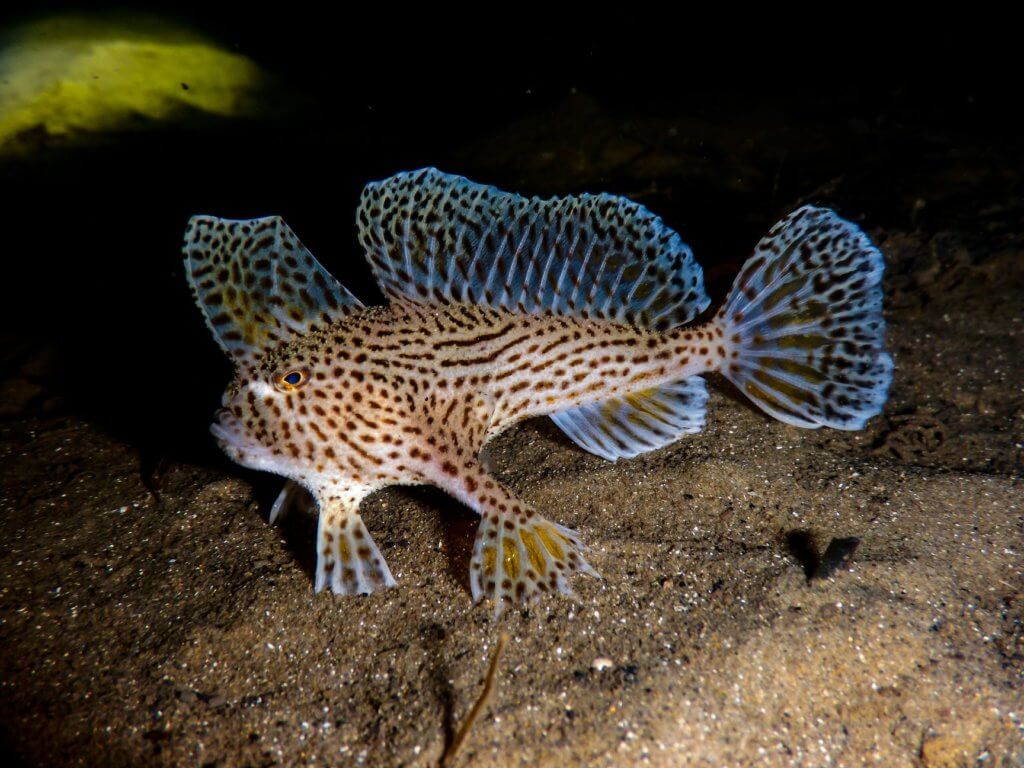
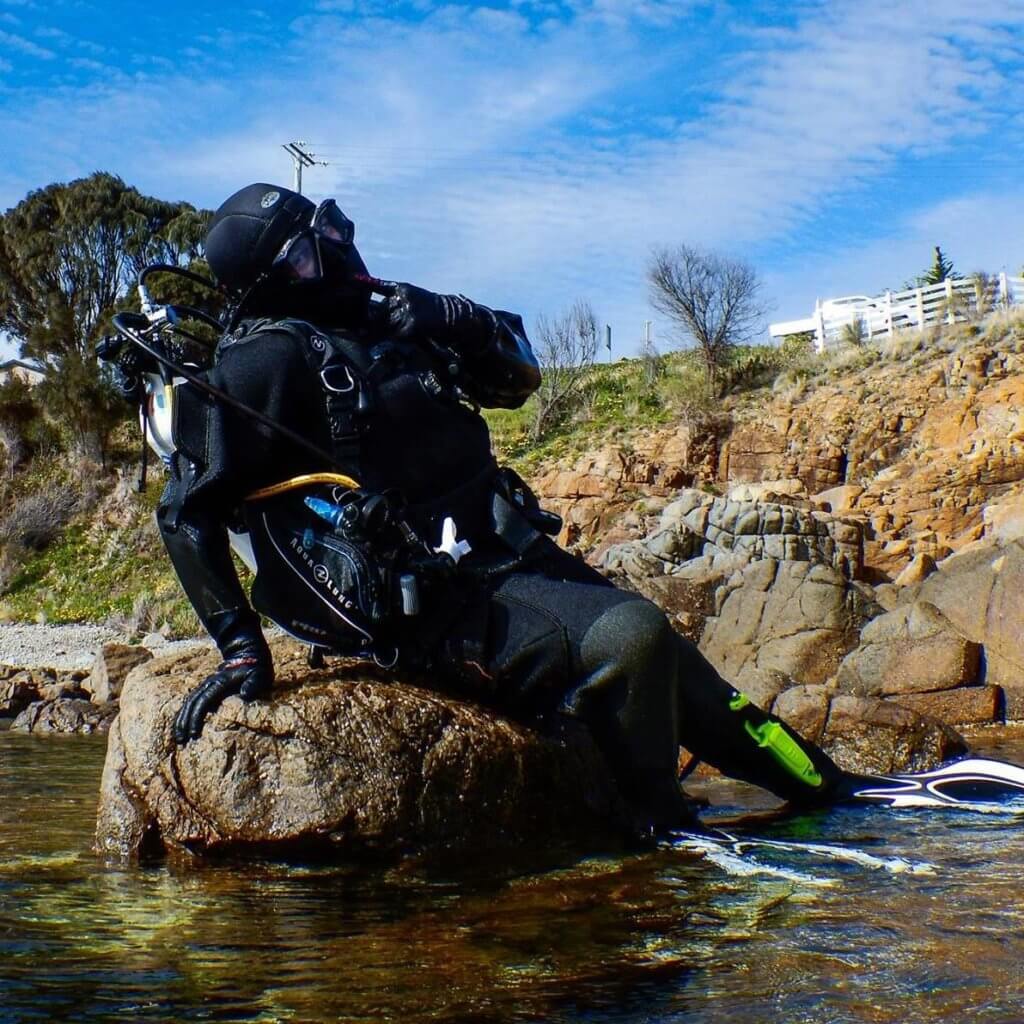
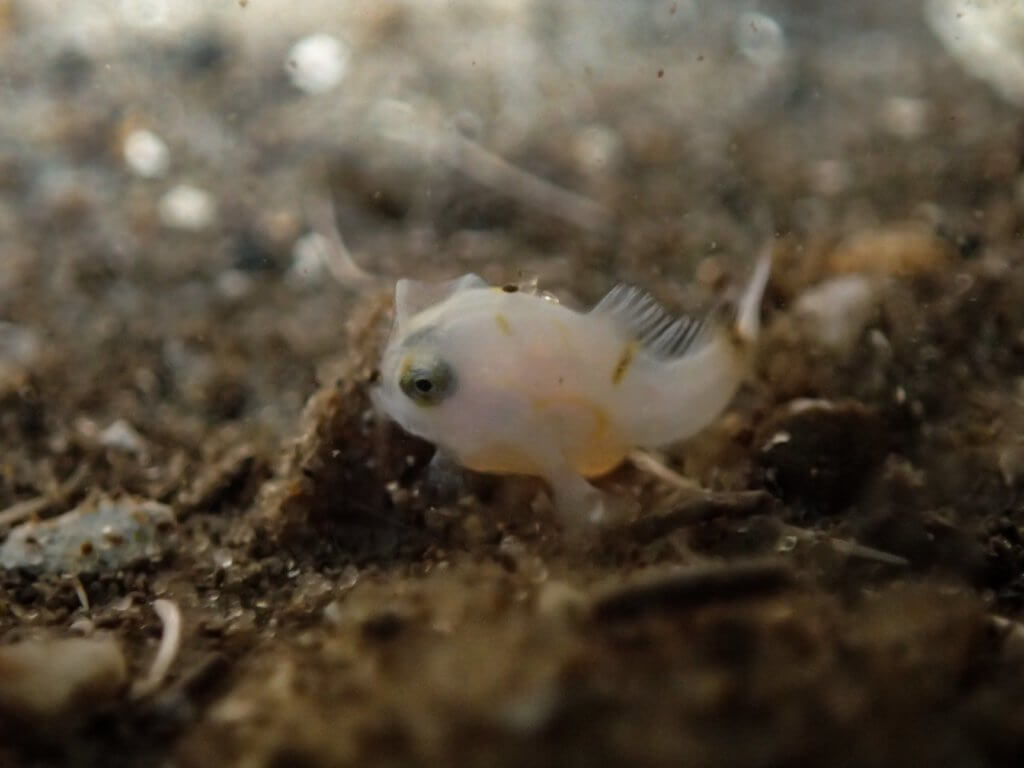


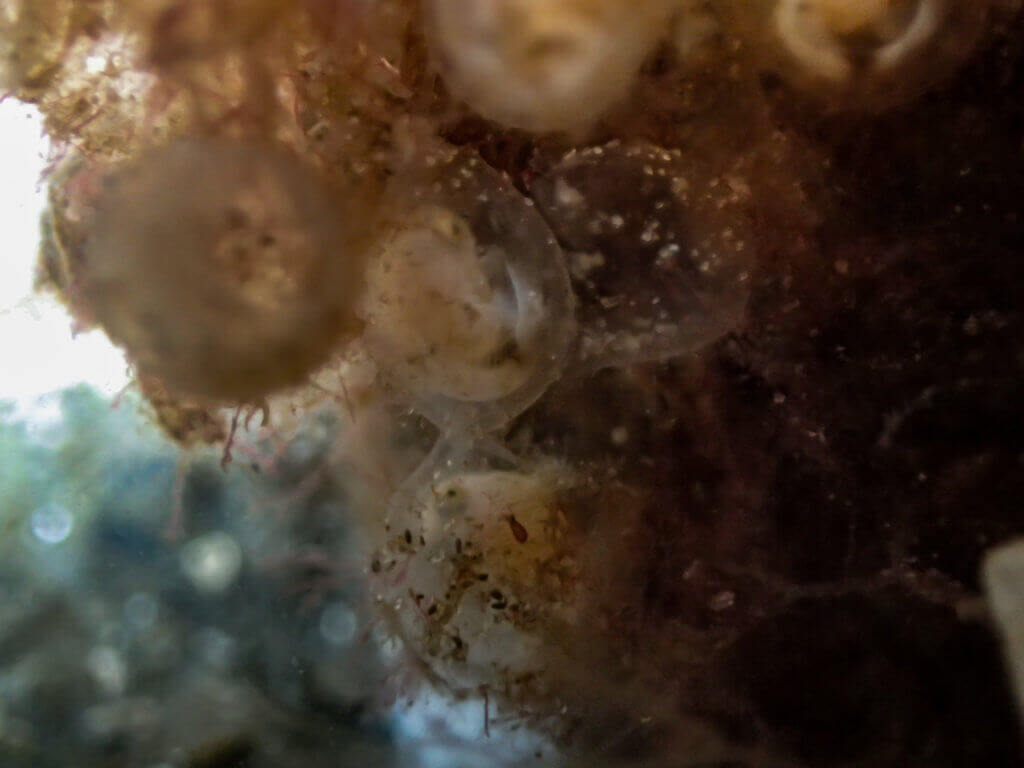
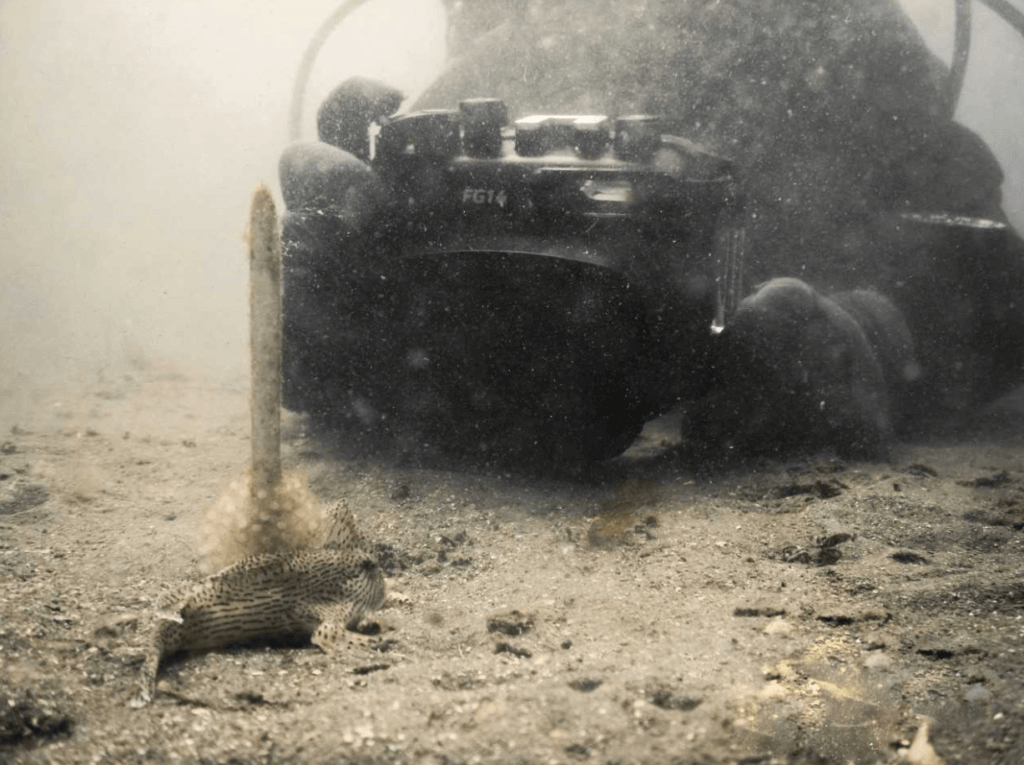
Images courtesy of Alex Hormann
We'd like to introduce you to a student studying the impacts of boat moorings on spotted handfish and their implications for the conservation of this species.
Meet Lincoln Wong:
Lincoln is a PhD student with the Institute for Marine and Antarctic Studies at the University of Tasmania, and also works with researchers at CSIRO and the Marine Biodiversity Hub. Growing up in the urban region of the Hong Kong Special Administrative Region (SAR), he was fortunate to be able to enjoy the coastline in Hong Kong during his free time. During his high school years, he had the chance to experience the underwater seascape first hand when he did his open water SCUBA course. Mesmerised by the underwater scene, it further drove his passion for pursuing a career in marine science and was attracted to complete his tertiary education in Australia.
Throughout his degree, Lincoln was exposed to a broad range of relevant topics, ranging from fisheries science to resource management. He developed a particular interest in population ecology and conservation biology. In 2015, he joined the handfish group and worked on his honours research project to survey the spotted handfish population. His work contributed to the study of the species-habitat relationship for the fish population.
Current research overview:
Lincoln’s current research focuses on the impacts that boat moorings can have on animals that live on the sea floor. It involves a comparative study on traditional swing mooring and environmentally sensitive mooring (ES mooring) to understand their effect on the adjacent benthic (i.e. sea floor) habitat over time. This research will provide insight into whether ES-mooring usage can be a viable conservation strategy for the spotted handfish population.
This project stemmed from our understanding of the habitat preferences of the spotted handfish, where individuals are more commonly associated with complex benthic habitats, such as filled depression. The chain component from traditional swing mooring, however, can cause repeated mechanical disturbance to the adjacent area and reduce the overall benthic complexity of the region.
Research details:
This project consists of a multidisciplinary study with research areas covering the ecology, social-economic, engineering and management aspect of ES-mooring usage. First, the ecological effect between moorings type will be assessed through a before-after-control-impact experiment. This project aims to directly compare the effect of ES-mooring and swing mooring on soft sediment habitat across different regions in South-East Tasmania.
We will be surveying the benthic community in the area adjacent to boat moorings over a year to document the potential changes and recovery of the benthic community over time. Using the environmental data collected, this project will also identify if ES-mooring can increase the overall health of the benthic habitat following the removal of disturbance, and the potential of natural re-introduction of spotted handfish.
In addition, this work can provide some technical insights of the deployment process, including the engineering requirement for ES-mooring deployment and surveying the mooring owner’s perception, in order to better understand the potential factors that may influence the deployment of ES-mooring in the long term.
Aims of the research:
Through this research, we aim to gather more comprehensive data on the effect of repeated mooring disturbance on the epibenthic community and the potential recovery following the removal of disturbance source. Using the data, we aim to facilitate the ongoing conservation effort for the spotted handfish population. By documenting our experience in the deployment process for ES-mooring, we can aid the decision-making process and inform regional management bodies for future, wider scale adaptation of ES-mooring.
Wishing Lincoln all the best - we'll keep everyone updated with how his project is coming along.
Some of Lincoln's work:
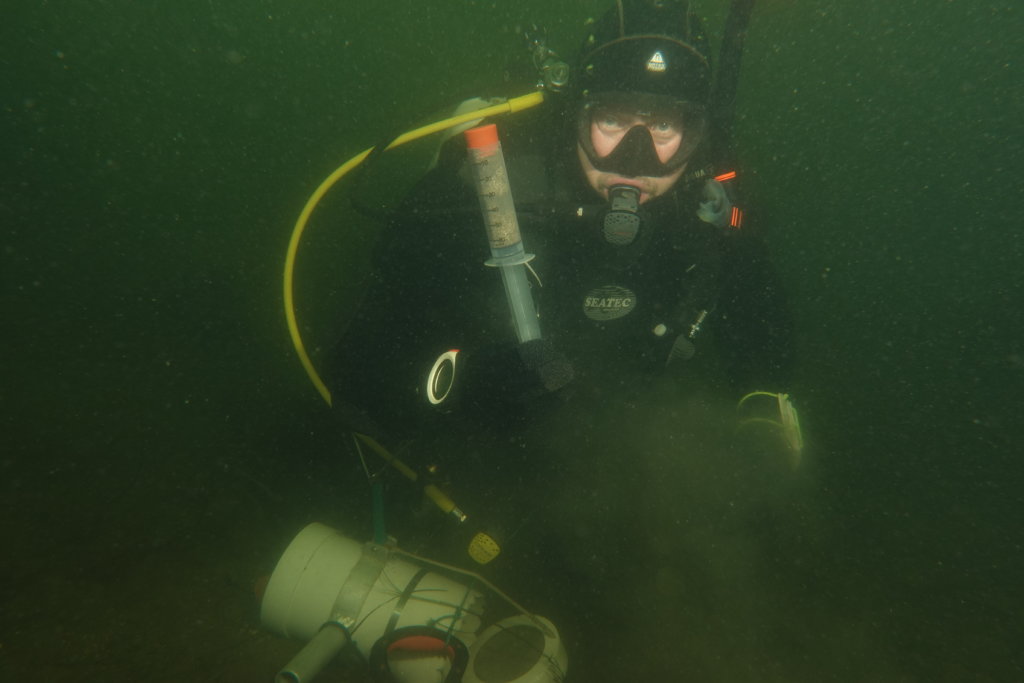


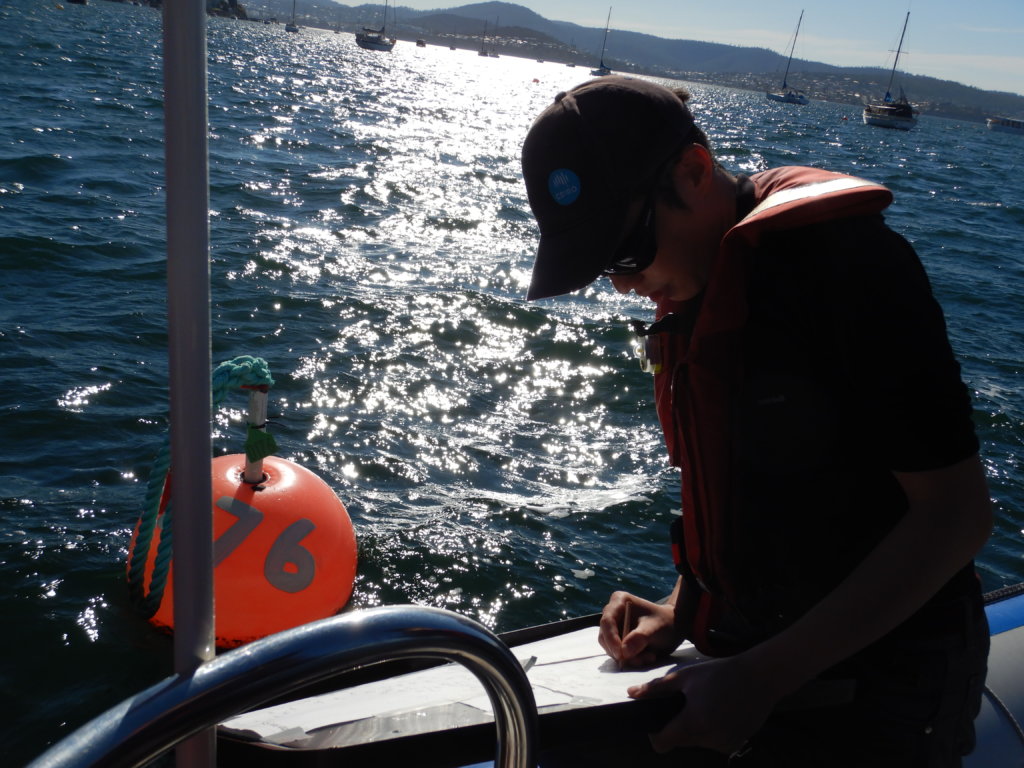
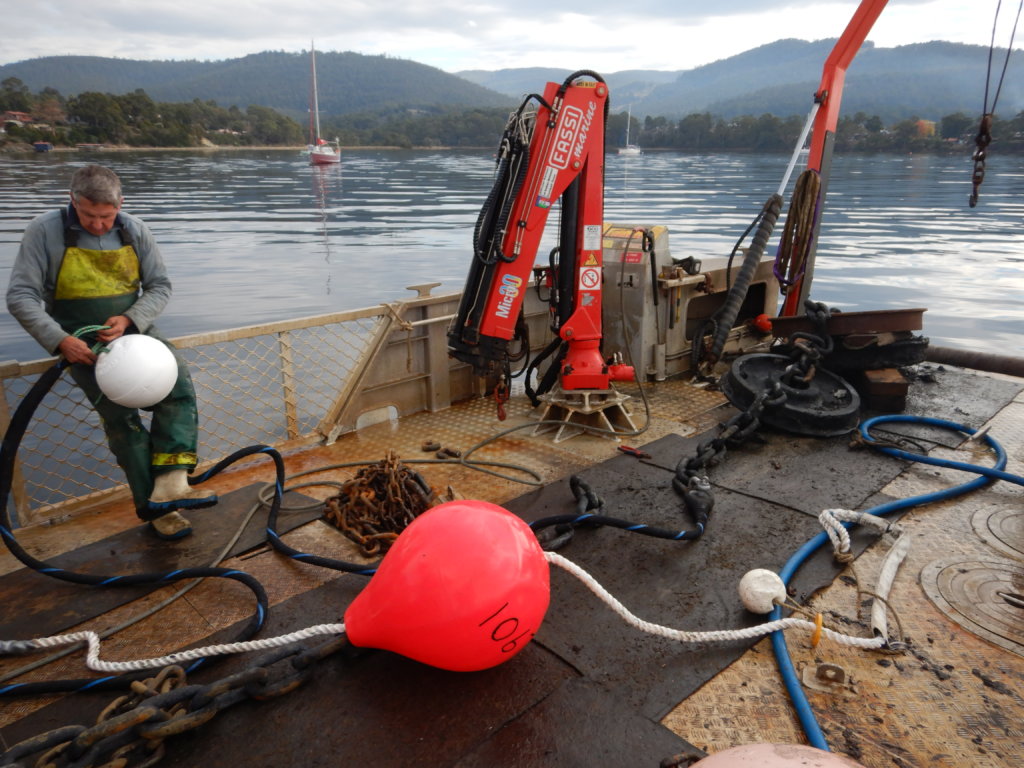
Images show some of the various field work undertaken in this project so far (courtesy of Lincoln Wong).
In what is a super positive step for red handfish conservation, we'd like to introduce you to a new PhD student at the Institute for Marine and Antarctic Studies at the University of Tasmania, Tyson Bessell! Tyson is already familiar with handfish - having worked on spotted handfish for his Honours project.
Tell us a bit about yourself, Tyson!
I was born and grew up in Hobart, going to school at St Virgil’s College until year 10, when I moved to Guilford Young College. At GYC, I studied many different subjects, with my favourites being marine and environmental sciences. I graduated from year 12 in 2014, and continued on with my education straight away, enrolling in a Bachelor of Marine and Antarctic Science, which I completed in 2017. Immediately after that, I completed my Honours in 2018. Just to continue the pattern of ongoing education and learning, I began my PhD project this year [2019].
My interest in marine life is a little clichéd; when I was five years old, my parents took me to Sea World on the Gold Coast for a family holiday. While I was there, I remember going to see a 4D movie (I can’t really remember what it was about). In the movie, I remember watching a beautiful green turtle swallow a plastic bag and choke. Obviously, as I was only a 5-year-old, this was very traumatic for me, and I spent the rest of the day balling my eyes out! But that was the moment that sparked my interest for marine conservation – from that day on, I wanted to be a marine biologist when I grew up.
Tell us about your Honours project:
For my Honours project, I was lucky enough to dive regularly around the Derwent River, photographing every spotted handfish I saw. I then used a computer program to help me identify different fish in those photos, which allowed me to track them through time. I did that by using their spots – in the same way we all have unique fingerprints, spotted handfish have unique spot patterns. This meant that I could measure how much the fish grew though time, how much they moved, and how long they could live for.
I found that there wasn’t very much movement in the few fish we managed to see on more than one occasion. One fish moved over 500 m in 3 years, while another fish only moved 50 m in 1 years. I also found that spotted handfish could change colours slightly. We think this might be a camouflage response, to try blend in with their surroundings as much as possible, but we aren’t quite sure just yet. I also found that spotted handfish might be able to live for up to 10 years.
Why handfish – have you always been interested in fish/conservation?
Like I said earlier, I’ve always been pretty passionate about marine conservation (those poor turtles!). Because handfish are endemic to Tasmania, I want to do my part as a born and bred Tasmanian to better their situation, and hopefully see all the endangered species of handfish recover over time. I also must admit, it’s pretty cool to be able to work with some of the rarest fishes in the world!
Tell us about the components of your PhD project, and what you hope to find/do with your findings:
When the opportunity came along to work with one of the rarest fishes in the world, I jumped right at it (in fact, I started a few months early!). My PhD project aims to reveal the ecology and biology of the red handfish, and how we might better conserve the species. My project is broken up into a few different components. First, I hope to provide the world’s first population estimate of red handfish. I’ll also be gathering information on movement, growth and habitat preference. Second, I’ll be exploring what makes for a successful captive breeding conservation program for marine fish, which may then be applied to red handfish (and potentially other species of handfish too). And third, using a genetic approach known as eDNA, I hope to trial a technique that will help us find new populations of handfish without needing to have SCUBA divers scour the apparently never-ending Tasmanian coast.
I hope that my project will work towards better conservation of handfish, particularly of the red handfish. There are so few fish left in the wild that urgent intervention is required to make sure the species doesn’t go extinct. If my work can help in the prevention of a species’ extinction, then I’ll feel accomplished, and lucky to have been a part of that story.
They say parents never have favourite children, but if you HAD to choose a favourite handfish species…(which would it be):
I think my favourite handfish has to be the red handfish. Seeing them in person for the first time felt like finding buried treasure. They are such a small, cute (and yet always grumpy) fish, and I think that’s what I like the most about them.
Wishing Tyson all the best - and we'll keep everyone updated with how his project is coming along.
Some of Tyson's work:
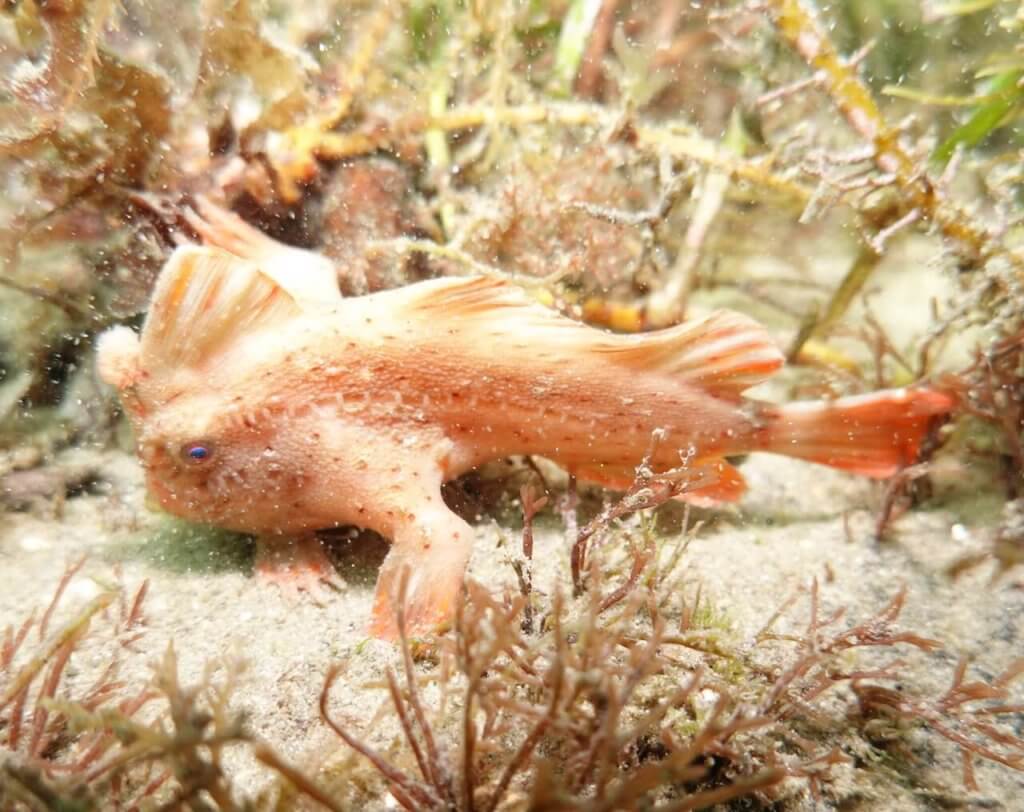
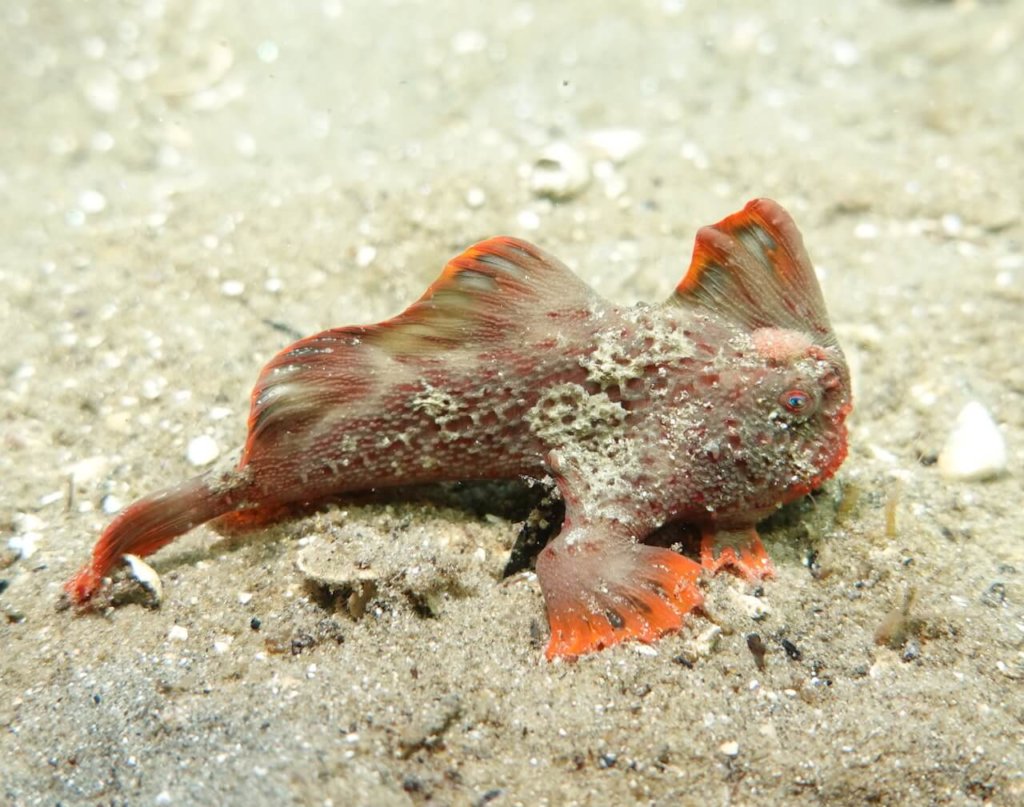
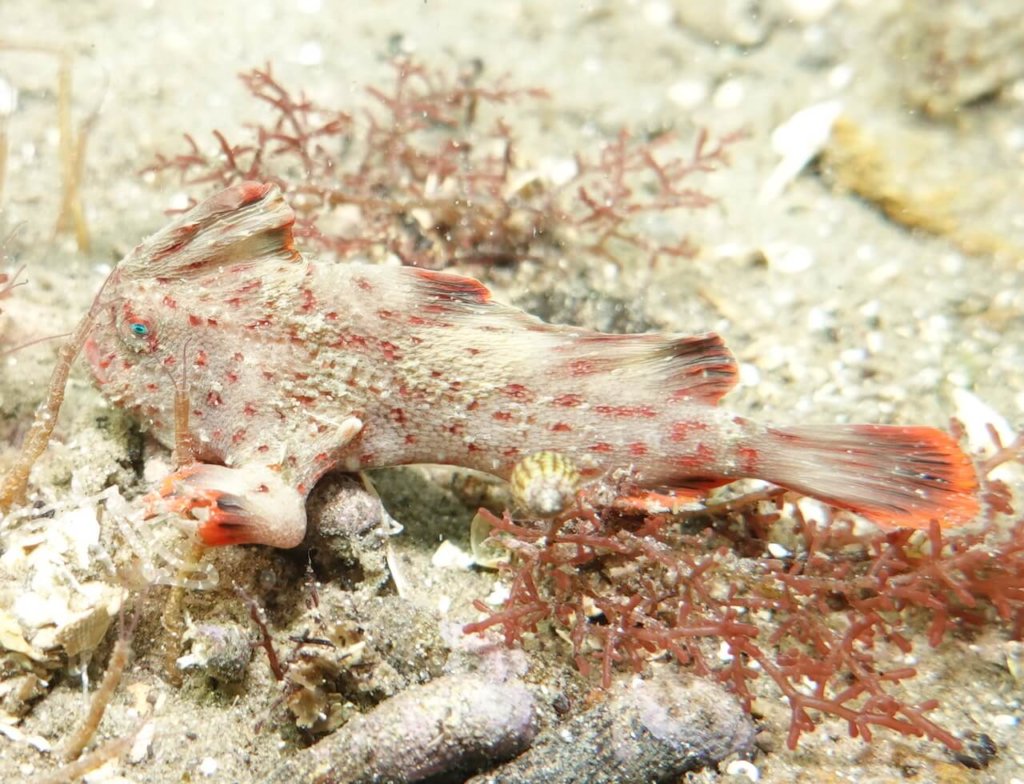
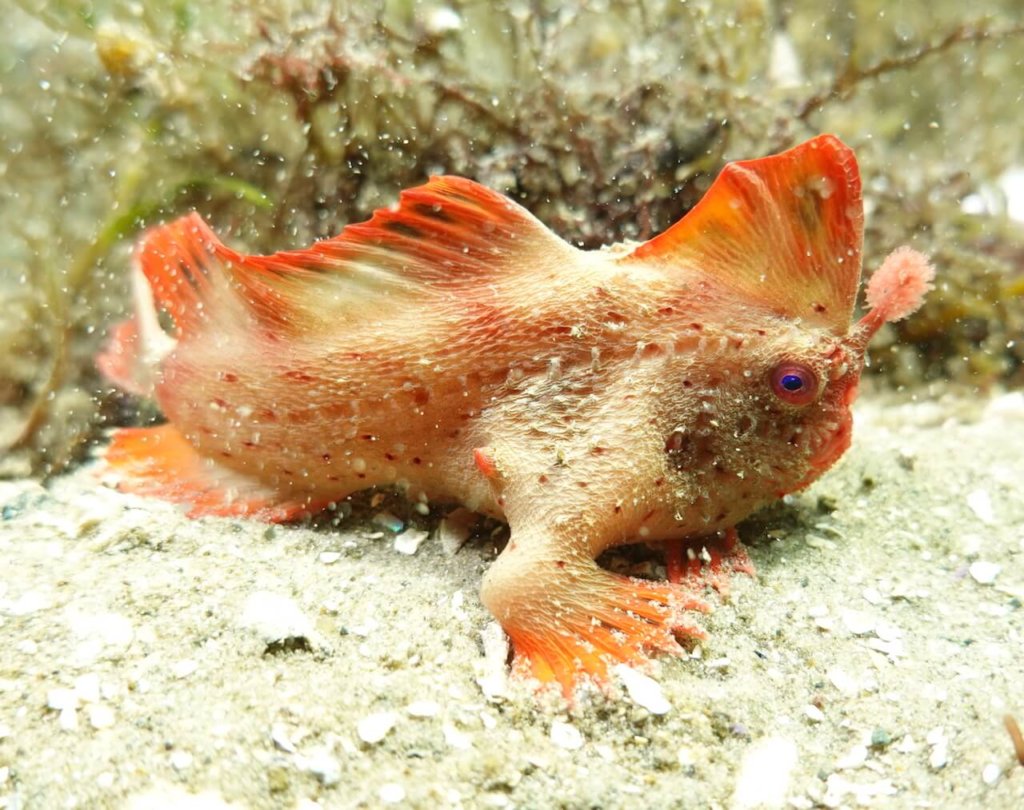
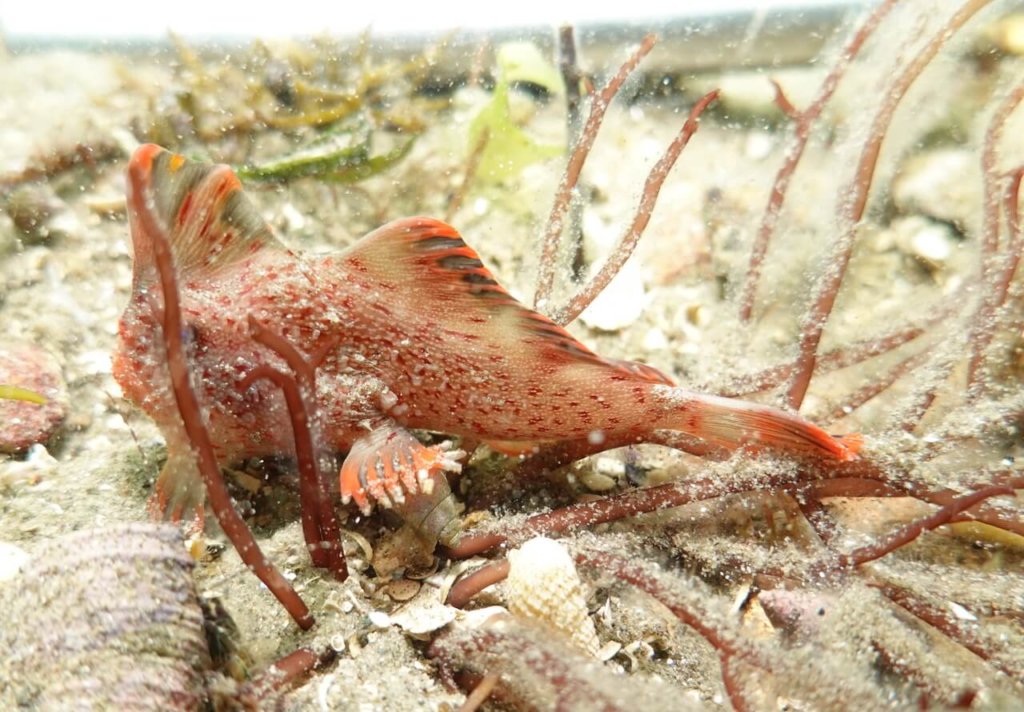
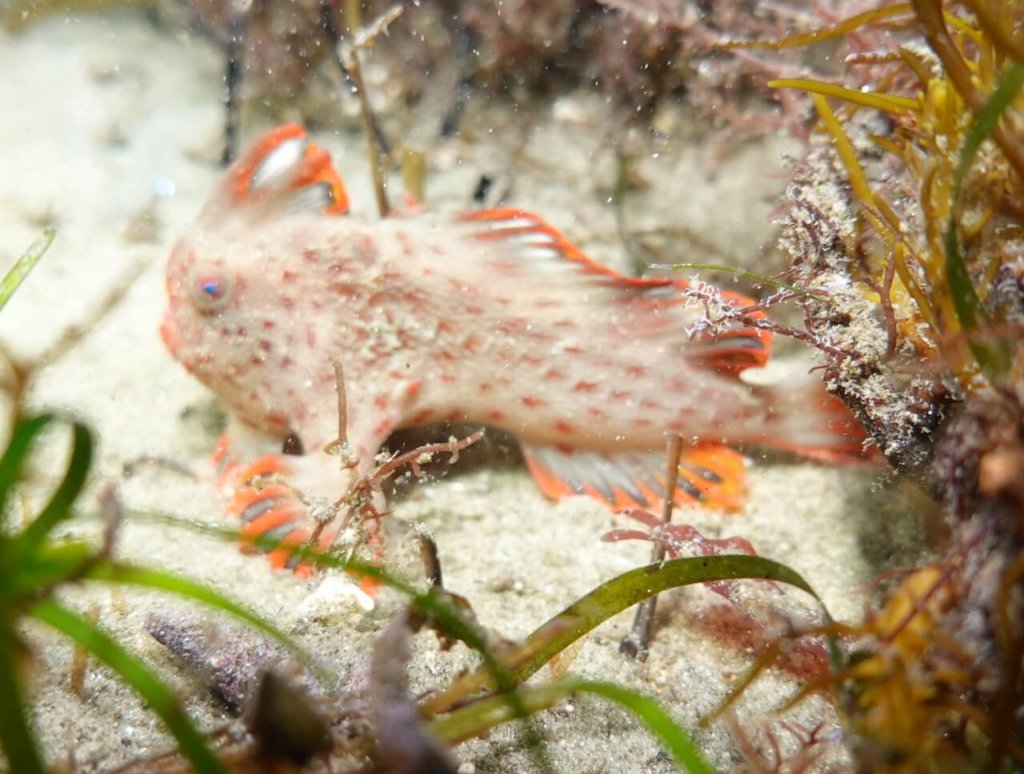
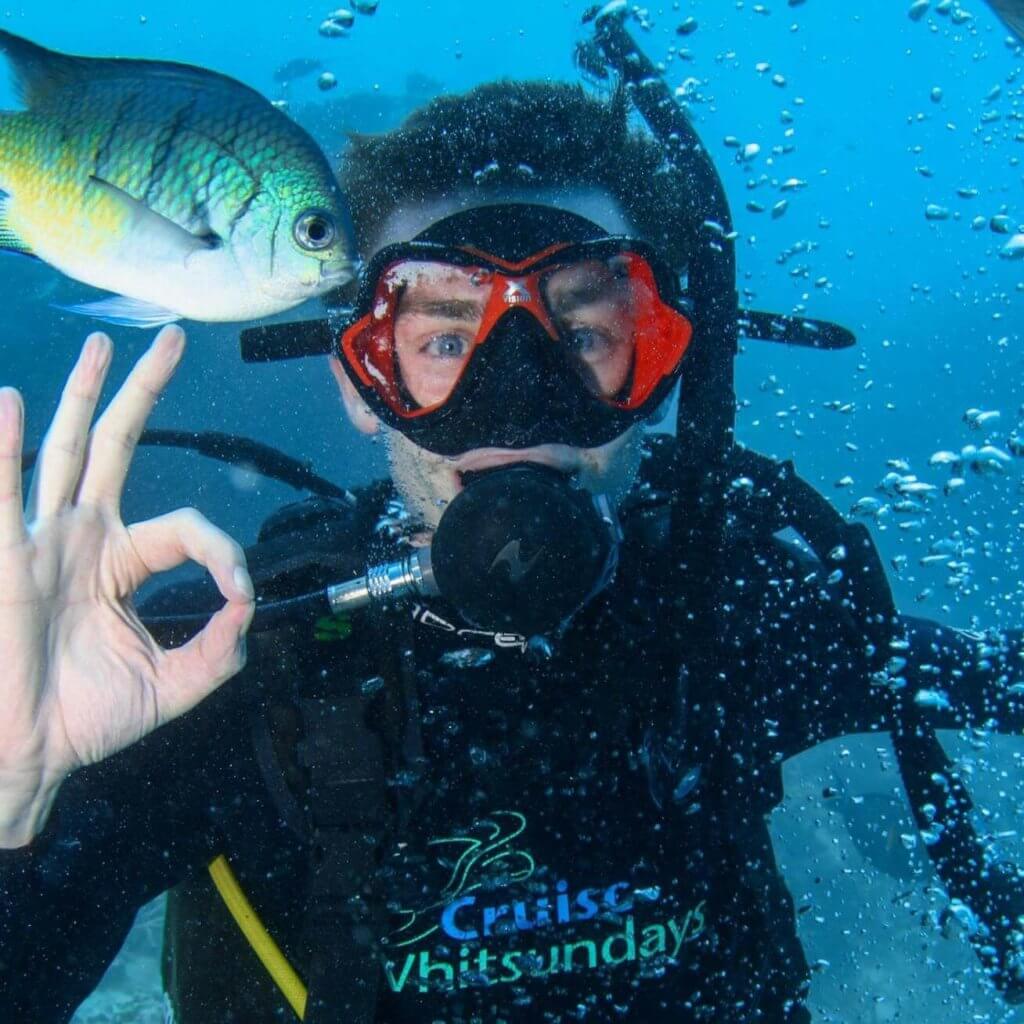
Images are courtesy of Tyson Bessell and represent some of the red handfish observed in his first field season.
We recently heard about some young Tasmanians taking things into their own ‘hands’ by doing their part to help conservation of Australian wildlife – including red handfish.
A keen and motivated wildlife warrior Danny Rumsby (grade 5) came up with an idea to make badges to raise awareness for endangered Australian species – and of course, got all of his friends to help out. They created the Wildlife Wizards Badges – to promote and raise funds for species in need and have created a website and Facebook page to help promote their work – which also contains information on each of the species.
We’re so excited to see young people take this initiative, so we thought we’d catch up with the team leader, Danny to find out more about what and why he’s helping conservation...
Danny - tell us about yourself!
I’m 10, and I go to South Hobart Primary School. I like surfing, fishing and snorkeling and I want to be a marine biologist when I grow up, so I can work with fish and coral reefs and help protect them.
How did you hear about handfish and what made you decide to help them?
My friend Arthur told me about the handfish when I came up with the idea for Wildlife Wizards Badges. We wanted to help the handfish project because the handfish are local to our area, and they look really cute, so people might want to help them.
Tell us about the Wildlife Wizards Badges - what they are and how you started it and who is involved?
I went to vacation care and there was a badge press which was really fun. I had the idea we could design badges to sell to support Australian wildlife conservation, and I invited some of my friends to help. Me, Arthur, Peter, Jem, Luca and Ben are the Wildlife Wizards, and my sister Eva. We made 300 badges and so far, we have raised over $600 for Australian wildlife projects including the Handfish Conservation Project.
How can people get their “hands” on a Wildlife Badge?
You can see them all on our website wildlifewizards.org - some are sold out already, but we plan to make some more. So far, we’ve sold them at school. We plan to sell some at Source Wholefoods at UTAS and the Skyline Garage [South Hobart].
Wishing Danny & team all the best - keep up the great work and keep working towards that marine biology degree!
(Images courtesy of Chloe Lucas)
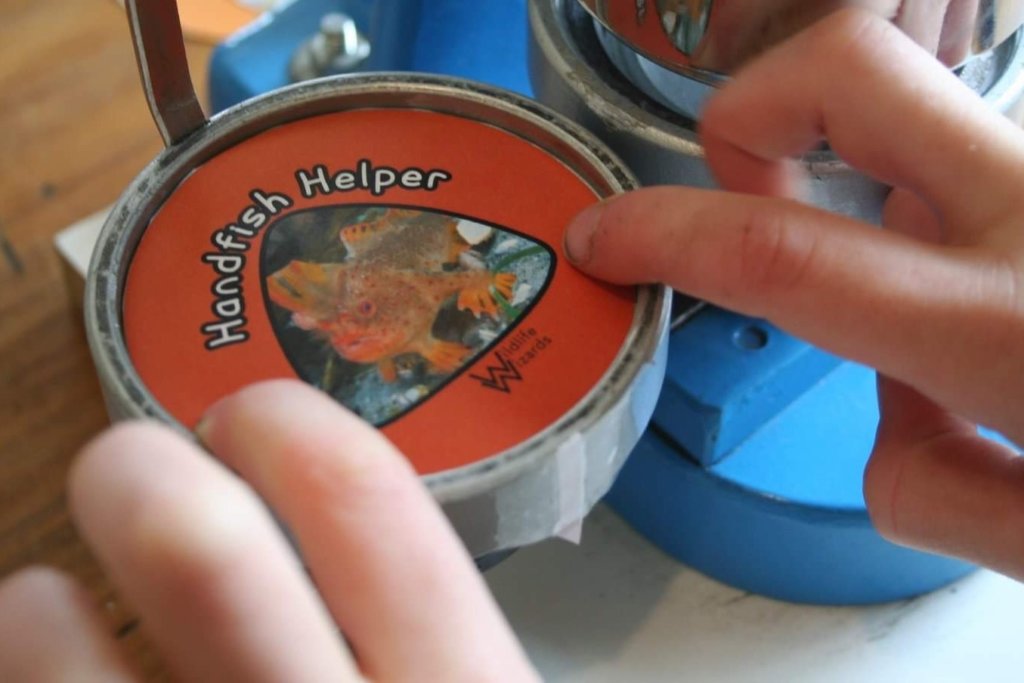
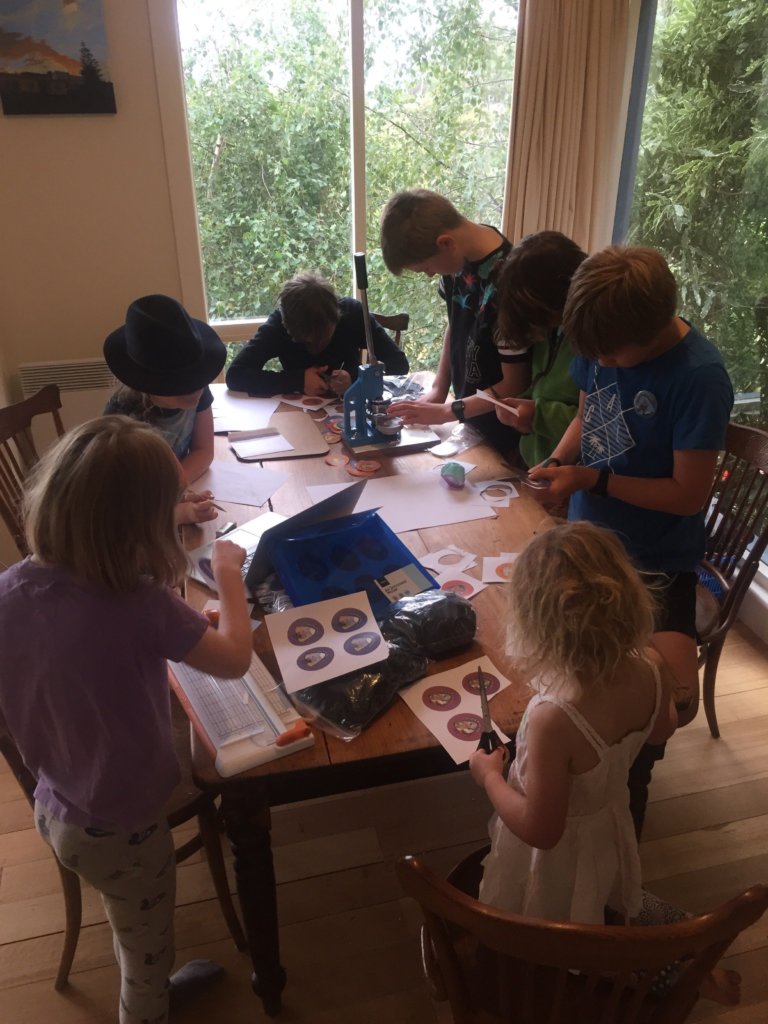
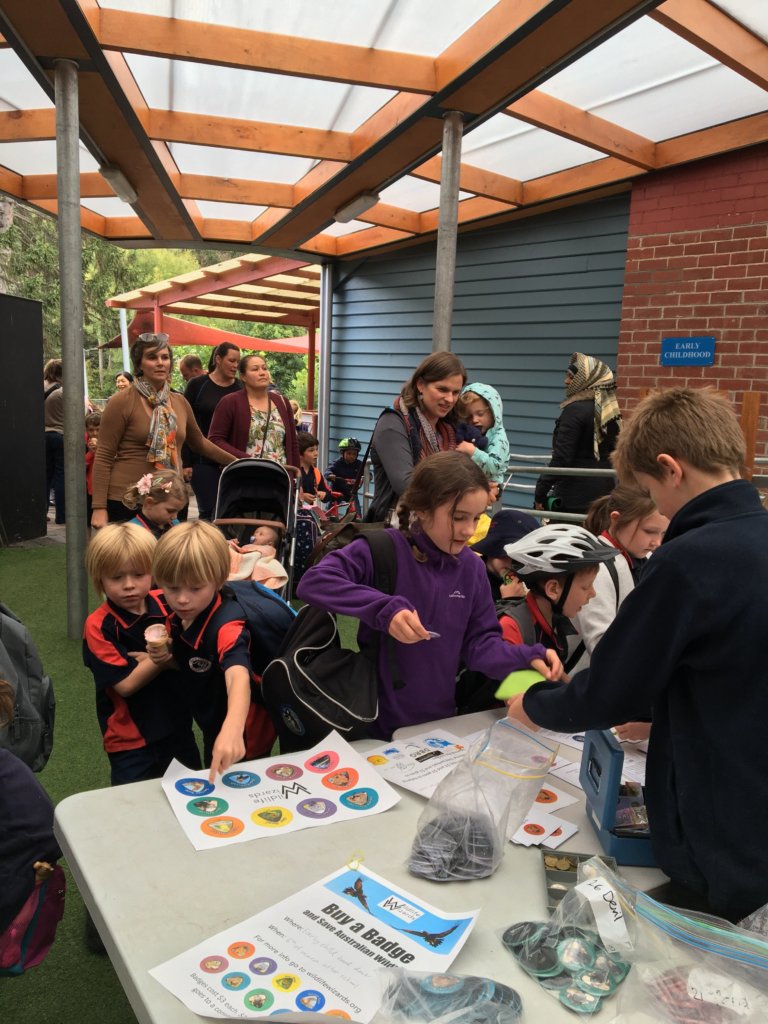



We were lucky enough to film this Red Handfish hanging out in Frederick Henry Bay (SE Tasmania) recently.
This individual was about 7cm long, and didn’t seem to mind some seaweed to the face (or being covered in sand!). Handfishes don’t have a swim bladder - which most fish have and use to help keep them afloat. This means that handfishes are found on the seafloor, and use their fins (“hands”) to walk. They are capable of swimming short distances, which is more of a ‘darting’ movement that occurs in bursts - which they often do when scared/spooked. But not this guy - he’s just happy sitting!
Footage credit: Rick Stuart-Smith, Reef Life Survey
The Handfish Conservation Project brings together various individuals and organisations in a collaborative effort to conserve three Critically Endangered Handfish species in Tasmania.
The research priorities of the Project will be under the directions of the National Handfish Recovery Team (NHRT), which was formed in 2014. The members of this team include relevant experience from Department of the Environment (Commonwealth), Department of Primary Industries, Parks, Water and Environment (Tasmania), Commonwealth Scientific and Industrial Research Organisation (CSIRO; Commonwealth), Derwent Estuary Program, and the Institute for Marine and Antarctic Studies (IMAS) at the University of Tasmania. You can see the individuals involved HERE. The Project aims to improve our understanding of these species, highlight their significance (and their plight) to the community, and work towards conserving them. We'll provide updates and information as the Project progresses via this website, and on the socials!
Recent monitoring of the two known Red Handfish populations near Hobart, Tasmania have been conducted by the Reef Life Survey team. The team of volunteer SCUBA divers use underwater visual census methods along a 50 m transect (detailed HERE) to record marine life, including the elusive Red Handfish. The methods are used worldwide to record life on nearshore reefs (allowing comparison at global scales).
Like Spotted Handfish, it appears that Red Handfish have unique markings - so that when one is observed, we can tell if it's previously been sighted. From this, we can build a database of images and information about these populations.